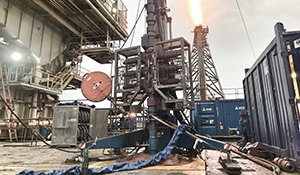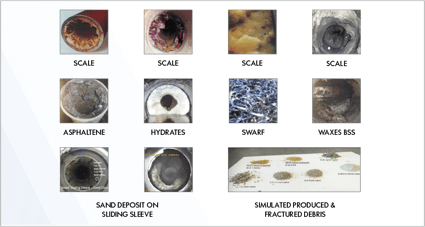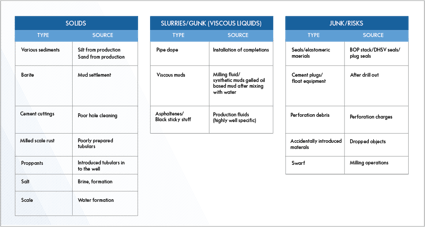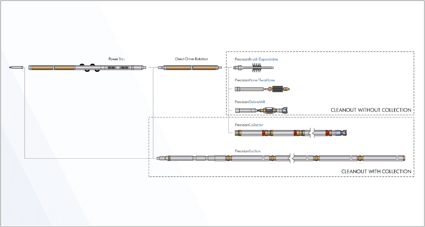The development and evolution of our electrically powered tractor technology has provided a growing range of e-line based interventions which are lighter in footprint than coiled tubing and more capable than slickline, complementing or in some circumstances providing a more viable alternative to these traditional intervention methods. With our tractor platform as a foundation for wellbore interventions, a toolkit of precision mechanical applications has evolved to solve customer challenges in the well with regards to cleanout, manipulation and access and recovery requirements.
An area with significant potential is the wellbore cleanout service. We have a dedicated research and engineering team focusing on solving critical customer challenges in this demanding field.
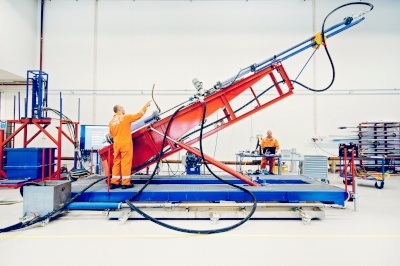 |
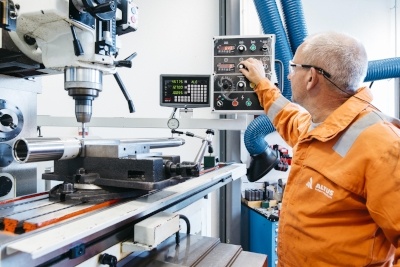 |
Altus Intervention's R&D centre in Stavanger
Wellbore cleanout is often not the ultimate goal of wellbore intervention. The primary motivation is reaching, manipulating or cleaning a completion component (valve, screen, perforation, plug) so that it can be pulled, moved or manipulated. Logging or perforation toolstrings may encounter an obstruction which needs to be removed, in order to provide passage through the wellbore. Consequently, wellbore cleanout needs to be highly reliable in operation, so that the next step in the intervention may proceed. This is historically where the challenge has been.
CHALLENGING DEBRIS TYPES
Debris in the wellbore accumulates for many different reasons. It is either produced - organic or inorganic solids (such as scale, waxes, asphaltenes, hydrates, sands and silts), to drilling and completion fluids (such as barites and muds). As pressure and temperature act on these substances in the well – they may end up being hard and consolidated or viscous and sticky. Previous interventions may also leave rust, proppants or milling fragments downhole. In addition, the debris may completely cover the wellbore for several metres or many hundreds of metres, or as localised bridges, or be in a sidepocket, or within a plug. Often the customer is uncertain of the severity of the cleanout problem they face in the well.
Click here to download our debris type charts and tool string.
OVERCOMING THE CHALLENGES: ONE SIZE DOES NOT FIT ALL
What does this mean for cleanout? Well, it means that one size solution does not fit all. In the Wellbore Cleanout (WBCO) Group, we have enhanced our understanding of cleaning solutions by breaking up the mission objective into debris type and geometry. What kind of physics solution would work to agitate the debris at the front of the toolstring? What mechanism would allow the debris to be collected into chambers (that are part of our toolstring)? Electric lines used in oilfield interventions provide a fairly limited range of volts and amps (i.e. electrical power) that can be used by the deployed toolstring. How do we best and most reliably use the electric power available downhole (5kw)? This certainly needs to be optimised in order to deal with the intervention tasks in hand.
Consider for example, a fullbore blockage of scale which is consolidated (hard), this would require our rock bit to break it up into smaller chunks first, crush it and then collect with the PrecisionCollector. In this instance, our downhole suction tool may not be the first choice. This was the case where we used the PrecisionCollector 250 to remove a severe Barium Sulphate (BaSO4) obstruction to restore well production and 154 litres were recovered in 24 runs. E-Line deployed wellbore cleanout operations usually require multiple runs in the well. To further enhance the wellsite operation efficiency, a wellsite washout system was made to clean the chambers recovered to surface of collected debris, in a fast and efficient manner. Read the case study. For this mission, coiled tubing was not a viable option for the client, and slickline bailing became limited, as it could not progress any further through the column of scale. The PrecisionCollector front rock bit, with its crushing/grinding action allowed steady and sure progress in agitation and breaking up of the debris. The collection then needed to be helped into chambers with an Archimedes Screw/ auger system. Simple, efficient and reliable. The PrecisionCollector runs underneath the tractor and Altus Intervention's rotational motor (DDR) provides rotation to the front of the toolstring.
FIELD PROVEN TECHNOLOGIES
In another wellbore cleanout operation, a combination of the PrecisionCollector 380 and PrecisionCollector 350 was used to clean 152 litres of settled barites in 6 runs. After 19 slickline bailers were run to clean an interval of approximately 6m, progress in cleanout stopped as more settled/consolidated material was encountered. The PrecisionCollector was then deployed into the wellbore, cleaned a further 12m and into a retrievable bridge plug.
In the USA, the PrecisionCollector has been used to clean long laterals in the Bakken Shale, where there was likely a combination of fullbore and bridges preventing access for the perforating guns. Coiled tubing was not an option due to buckling limitations in the long three mile lateral. Read the case study.
The PrecisionCollector has also been used to provide customers with samples of debris in order to inform on decisions for subsequent interventions, such as this case study in West Africa
THE LIGHTER COST EFFECTIVE SOLUTION
Customers from all regions are now deploying the cleanout workhorse – the PrecisionCollector. Available in 2.5”, 3.5”, 3.8” and 4.5” OD sizes, with a range of bits to enable access and clean downhole, this toolstring is able to handle a wide range of debris, completion sizes and downhole conditions. We are excited by the growing use of this technology and often where other technologies are not viable, or where others have failed. Powered Precision trumps power.
Next time we’ll discuss our suction technology, how we develop our tools with a multidisciplinary team and why laboratory testing is so critical to our design process. We’ll also give you a sneak peak of what’s coming in the future. Sign up to our mailing to be the first to hear about the next blog.
For more information about our PrecisionCollector please click here or contact us to discuss your wellbore cleanout challenges.

